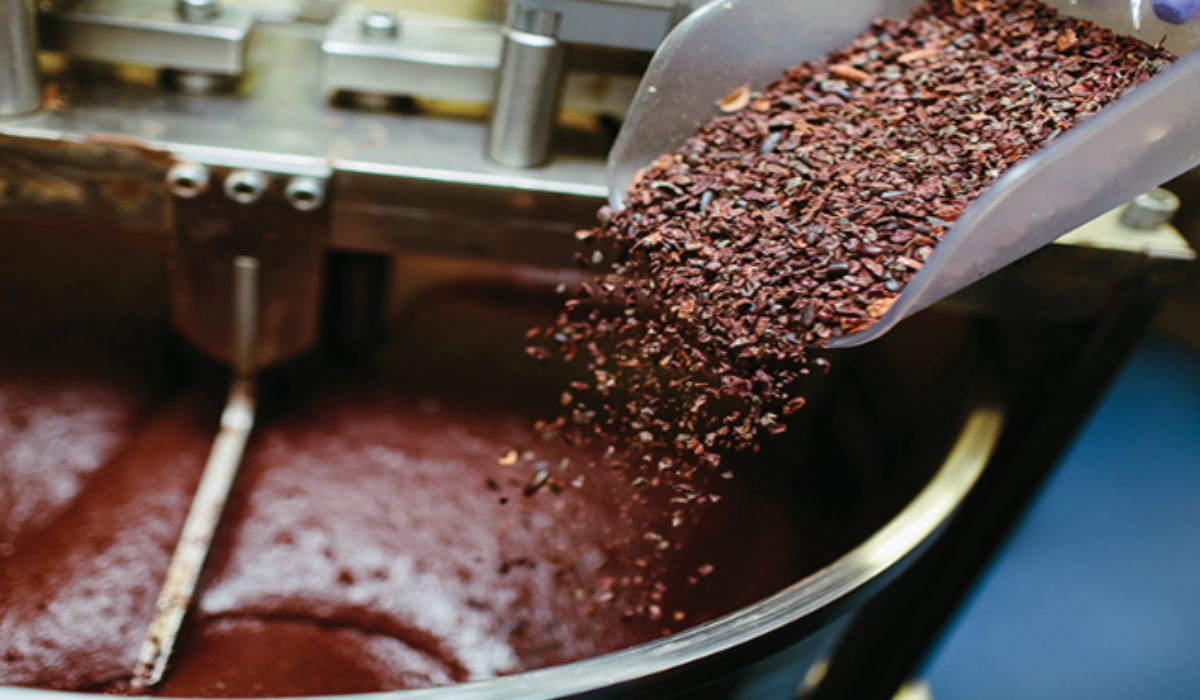Chocolate manufacturing is a precise and delicate process that requires advanced machinery to ensure consistency, quality, and efficiency. Among the most critical components in this process is the chocolate mass pump, designed to handle the unique challenges posed by liquid chocolate. These pumps play a vital role in transporting the viscous and temperature-sensitive chocolate through various stages of production, maintaining its quality and integrity.
Key Functions of a Chocolate Mass Pump
1. Maintaining Temperature
- Why It Matters: Chocolate’s viscosity and flow depend heavily on temperature. If the temperature drops, the chocolate solidifies; if it’s too high, it risks burning or caramelizing.
- How Pumps Help: Most chocolate mass pumps are equipped with heating jackets, which circulate hot water or steam to maintain the ideal temperature. This ensures the chocolate stays in a liquid state, ready for processing.
- Example in Use: Pumps with precise temperature controls prevent issues such as crystallization or uneven textures in the final product.
2. Handling High Viscosity
- The Challenge: Chocolate is a dense, high-viscosity fluid, especially when dealing with cocoa mass or other thick components of the recipe.
- Pump Types:
- Positive Displacement Pumps: These, such as gear pumps, are specifically designed to move thick fluids efficiently.
- Advantages: They provide consistent flow rates without causing blockages, even at high viscosities.
- Efficiency in Action: By maintaining steady pressure and flow, these pumps ensure smooth production, avoiding interruptions or waste.
3. Ensuring Hygiene
- Food Safety Standards: Since chocolate is a consumable product, the equipment must adhere to stringent hygiene requirements to prevent contamination.
- Pump Design Features:
- Food-Grade Materials: Pumps are constructed using stainless steel or other non-reactive, hygienic materials.
- Ease of Cleaning: Modern pumps are designed for CIP (Clean-in-Place) systems, allowing thorough cleaning without dismantling the equipment.
- Outcome: This meticulous attention to cleanliness ensures a safe and high-quality product.
4. Preventing Shear Stress
- Why It’s Crucial: Chocolate is sensitive to shear forces, which can separate cocoa butter from solids, leading to a gritty texture or undesirable flavor.
- Pump Operation:
- Low Speeds and Pressures: Pumps operating at reduced speeds minimize shear stress.
- Preserving Quality: The careful handling ensures the chocolate retains its smooth, creamy consistency and rich flavor profile.
- Result: Delicate handling during pumping contributes significantly to the overall quality of the chocolate.
Selecting the Right Chocolate Mass Pump
Choosing the correct pump for chocolate manufacturing depends on several factors, including viscosity, production scale, and the specific type of chocolate being produced. Here are some considerations:
- Type of Pump: Positive displacement pumps are preferred for their ability to handle high-viscosity fluids.
- Temperature Control: Pumps with effective heating mechanisms are essential to maintain fluidity.
- Material Compatibility: Food-grade, corrosion-resistant materials are mandatory for hygiene and durability.
- Operational Efficiency: Energy-efficient pumps reduce production costs while ensuring consistent performance.
The Impact of Chocolate Mass Pumps on Production
Efficient chocolate mass pumps are indispensable for modern chocolate manufacturing. They contribute to:
- Consistent Texture: Ensuring the smooth, uniform flow of chocolate.
- Enhanced Efficiency: Reducing production downtime and waste.
- Improved Hygiene: Meeting food safety standards effortlessly.
- Product Quality: Maintaining the delicate balance of flavor, texture, and appearance.
Conclusion
In the intricate world of chocolate production, where every detail matters, chocolate mass pumps serve as a cornerstone of the process. By managing temperature, handling viscosity, ensuring hygiene, and minimizing shear stress, these pumps ensure the production of high-quality chocolate that delights consumers worldwide. The careful selection and maintenance of these pumps are crucial for any manufacturer aiming to achieve excellence in their craft.
FAQs
- Why are heating jackets necessary in chocolate mass pumps?
Heating jackets prevent the chocolate from solidifying by maintaining a consistent temperature, ensuring smooth flow during production. - What type of pump is best for chocolate manufacturing?
Positive displacement pumps, such as gear pumps, are ideal due to their ability to handle high-viscosity materials efficiently. - How do pumps prevent chocolate contamination?
Pumps are made of food-grade materials and designed for easy cleaning, often integrating Clean-in-Place (CIP) systems to ensure hygiene. - What happens if chocolate experiences excessive shear stress?
Excessive shear stress can cause separation of cocoa butter and solids, leading to poor texture and flavor. - Can chocolate mass pumps handle other viscous products?
Yes, these pumps are versatile and can manage other high-viscosity products like peanut butter, caramel, or syrups.

